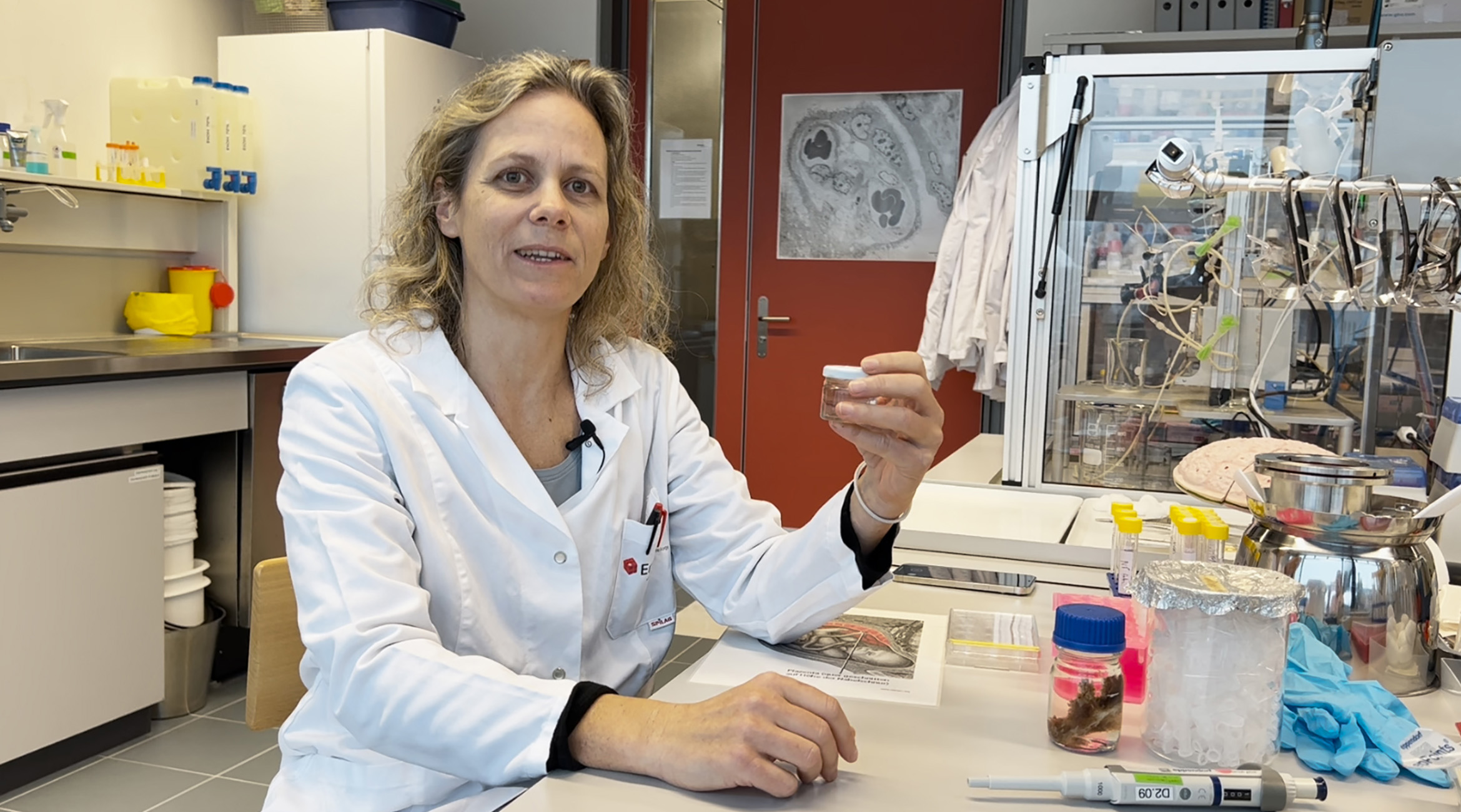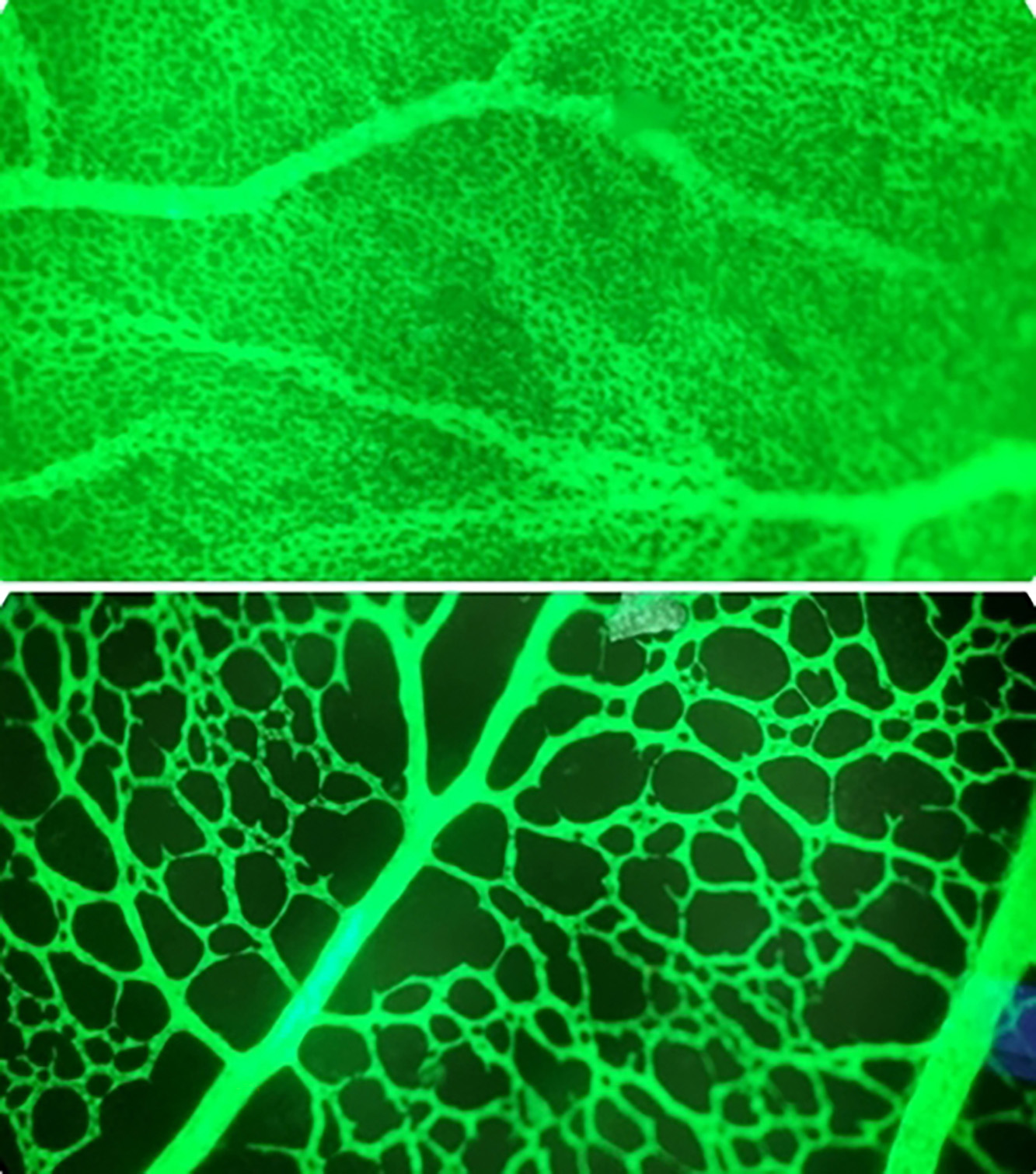博文
令人不安的后果:发现纳米颗粒对未出生的孩子有神秘的影响
 精选
精选
||
令人不安的后果:发现纳米颗粒对未出生的孩子有神秘的影响
诸平
Fig. 2 Empa-Researcher Tina Bürki. Credit: Empa
据瑞士联邦材料科学与技术实验室(Swiss Federal Laboratories for Materials Science and Technology简称EMPA / Empa, St. Gallen, Switzerland)2024年6月11日提供的消息,他们发现了令人不安的后果:纳米颗粒(Nanoparticles)被发现对未出生的孩子有神秘的影响(Troubling Consequences: Nanoparticles Found To Have Mysterious Effects on Unborn Children)。相关研究结果于2024年5月20日已经在《先进科学》(Advanced Science)杂志网站在线发表——Battuja Dugershaw-Kurzer, Jonas Bossart, Marija Buljan, Yvette Hannig, Sarah Zehnder, Govind Gupta, Vera M. Kissling, Patrycja Nowak-Sliwinska, Judy R. van Beijnum, Arjan W. Griffioen, Stefan Masjosthusmann, Etta Zühr, Ellen Fritsche, René Hornung, Thomas Rduch, Tina Buerki-Thurnherr. Nanoparticles Dysregulate the Human Placental Secretome with Consequences on Angiogenesis and Vascularization. Advanced Science, 2024: e2401060. DOI: 10.1002/advs.202401060. First published: 20 May 2024. https://doi.org/10.1002/advs.202401060
参与此项研究的除了来自Empa的研究人员之外,还有来自瑞士苏黎世联邦理工学院(ETH Zurich, Zurich, Switzerland)、瑞士生物信息学研究所(Swiss Institute of Bioinformatics, Lausanne, Switzerland)、瑞士西部药物科学研究所(Institute of Pharmaceutical Sciences of Western Switzerland, Geneva, Switzerland)、瑞士日内瓦大学(University of Geneva, Geneva, Switzerland)、荷兰阿姆斯特丹自由大学(UMC loacation Vrije Universiteit Amsterdam, Amsterdam, The Netherlands)、德国莱布尼茨环境医学研究所(IUF-Leibniz Research Institute for Environmental Medicine, Duesseldorf, Germany)、德国海因里希·海涅大学(Heinrich Heine University, Duesseldorf, Germany)、德国杜塞尔多夫的DNTOX有限责任公司(DNTOX GmbH, Duesseldorf, Germany)以及瑞士圣加仑州医院{Cantonal Hospital St.Gallen (KSSG), St. Gallen, Switzerland}的的研究人员。
研究人员正在研究来自各种产品和环境来源的纳米粒子是如何通过破坏胎盘功能和间接伤害胎儿组织来影响胚胎发育的,尽管胎盘有保护性屏障。
人类的生命始于一个卵细胞,然后成长为一个拥有数万亿个细胞的人。为了确保高度复杂的组织和器官的发育得到尽可能的保护,胎盘屏障(placental barrier)将病原体和外来物质拒之门外。来自瑞士圣加仑市Empa粒子-生物相互作用实验室(Empa’s Particles-Biology Interactions laboratory in St. Gallen)的蒂娜·布尔基(Tina Bürki)和她的团队正在研究这种保护机制如何应对纳米颗粒。
纳米颗粒包含在大量的产品中,但它们也在磨损和燃烧过程中产生。蒂娜·布尔基解释说:“我们通过食物、化妆品或呼吸的空气从环境中吸收这些物质。”其中一些纳米粒子被怀疑会伤害子宫内的婴儿。低出生体重、自闭症和呼吸系统疾病都是可能给孩子带来的后果。
神秘的远程效应(Mysterious remote effect)
目前还不清楚纳米颗粒如何影响未出生的孩子。“我们已经知道胎盘屏障保留了许多纳米粒子,或者至少延迟了它们向胚胎的运输,”蒂娜·布尔基说。然而,即使在胎儿中没有检测到纳米颗粒,也会对胎儿组织造成损害。Empa团队现在正在深入研究纳米颗粒的这种远距离效应。该团队与来自圣加仑州立医院(Cantonal Hospital of St. Gallen)的临床合作伙伴、来自日内瓦大学(University of Geneva)、阿姆斯特丹大学医学中心(Amsterdam University Medical Center)和德国杜塞尔多夫市的莱布尼茨环境医学研究所(Leibniz Institute for Environmental Medical Research in Düsseldorf)的研究伙伴一起,正在调查二氧化钛(TiO2)或柴油烟尘(diesel soot)等常见纳米颗粒对胎盘功能的影响及其对胚胎发育的间接损害。
为此,该团队使用了计划剖宫产后可用的功能齐全的人类胎盘。“人类胎盘组织是在纳米颗粒的运输和作用方面获得有意义的结果的唯一途径,”Empa的研究人员说。“母体和胎儿组织的结构、代谢和相互作用是独一无二的,而且是物种特异性的。”
实验表明,胎盘组织中的纳米颗粒破坏了大量信使物质的产生。正是这些信使可以引发胚胎发育的严重变化,比如血管形成紊乱。
这些效应可以在使用鸡蛋的实验室模型中可视化。鸡蛋中的血管实际上以巨大的速度和密度生长,以促进胚胎的发育。蛋壳内部覆盖着致密的细血管网。用纳米颗粒处理过的胎盘中改变的信使物质,处理过的鸡蛋的情况截然不同:在实验中,血管系统没有那么密集,而是相当粗糙。“纳米颗粒通过抑制信使物质形成血管,显然对子宫内的孩子有间接影响,”蒂娜·布尔基说。
健康后果(Health consequences)
研究人员目前正在研究由纳米颗粒处理的胎盘释放的全部信使物质,即所谓的分泌组(secretome)。未受污染的激素(hormones)、炎症介质(inflammatory mediators)和信号物质(signaling substances)的相互作用,形成了器官系统,就像一个完美的管弦乐队。目前已经很清楚的是,胎盘和胎儿之间的交流被纳米颗粒的存在扰乱,并破坏了血管的形成。然而,初步结果显示,神经系统的发育似乎没有受到影响。未来的分析将揭示纳米颗粒还能间接引发哪些疾病。这名研究者说:“由于这些影响可能对孕妇的健康和孩子的发育产生影响,这些发现应该被考虑到纳米材料的风险评估中。”
临床合作伙伴圣加仑州立医院也很感兴趣。正如Empa的临床研究员、妇女诊所(Women’s Clinic)的托马斯·杜赫(Thomas Rduch)所说:“健康的胎盘对孩子的发育至关重要。因此,对环境污染进行正确的风险评估同样对孕妇也至关重要。”
本研究得到了瑞士国家科学基金会{Swiss National Science Foundation (grant number 31003A_179337)}的资助。
上述介绍,仅供参考。欲了解更多信息,敬请注意浏览原文或者相关报道。
Exposure to nanoparticles (NPs) in pregnancy is increasingly linked to adverse effects on embryo-fetal development and health later in life. However, the developmental toxicity mechanisms of NPs are largely unknown, in particular potential effects on the placental secretome, which orchestrates many developmental processes pivotal for pregnancy success. This study demonstrates extensive material- and pregnancy stage-specific deregulation of placental signaling from a single exposure of human placental explants to physiologically relevant concentrations of engineered (silica (SiO2) and titanium dioxide (TiO2) NPs) and environmental NPs (diesel exhaust particles, DEPs). This includes a multitude of secreted inflammatory, vascular, and endocrine placental factors as well as extracellular vesicle (EV)-associated proteins. Moreover, conditioned media (CM) from NP-exposed explants induce pronounced anti-angiogenic and anti-vasculogenic effects, while early neurodevelopmental processes are only marginally affected. These findings underscore the potential of metal oxide NPs and DEPs for widespread interference with the placental secretome and identify vascular morphogenesis as a sensitive outcome for the indirect developmental toxicity of different NPs. Overall, this work has profound implications for the future safety assessment of NPs for industrial, commercial, or medical applications in pregnancy, which should consider placenta-mediated toxicity by holistic secretomics approaches to ensure the development of safe nanotechnologies.
https://blog.sciencenet.cn/blog-212210-1437957.html
上一篇:突破性的研究实现了前所未有的数据传输速率
下一篇:植物性超加工食品与心血管疾病风险较高有关


